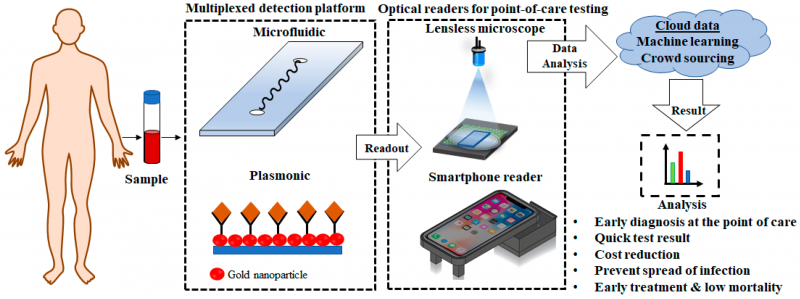In recent years, the healthcare industry has witnessed a significant transformation with the advent of point-of-care diagnostics (POC). These innovative tools and technologies are revolutionizing the way healthcare professionals diagnose and manage diseases. This blog explores the Point-of-Care Diagnostics Market, highlighting its key components, benefits, challenges, and future prospects.
Understanding Point-of-Care Diagnostics
Point-of-care diagnostics refer to medical tests performed at or near the patient, providing rapid results without the need for complex laboratory infrastructure. These tests encompass a wide range of applications, from detecting infectious diseases to monitoring chronic conditions like diabetes. POC diagnostics are designed to be user-friendly, cost-effective, and yield quick, actionable insights, making them invaluable in various healthcare settings.
Key Components of the POC Diagnostics Market
- Devices: POC diagnostic devices come in various forms, including handheld devices, portable analyzers, and smartphone apps. These tools are designed to perform a range of tests, such as blood glucose monitoring, rapid infectious disease detection, and cardiac biomarker analysis.
- Consumables: Reagents, test strips, cartridges, and disposable components are essential consumables in the POC diagnostics market. These consumables are often specific to the diagnostic device and the test being conducted.
- Software: POC diagnostics often rely on software for data analysis and connectivity. This allows healthcare professionals to store and transmit patient data securely, facilitating timely decision-making.
Benefits of Point-of-Care Diagnostics
The adoption of POC diagnostics brings several benefits to healthcare systems, professionals, and patients:
- Rapid Results: POC tests offer quick results, enabling immediate clinical decision-making. This is crucial for timely treatment and reducing patient anxiety.
- Improved Patient Management: Healthcare providers can monitor chronic conditions more effectively, optimizing patient care and reducing hospital readmissions.
- Reduced Healthcare Costs: By avoiding unnecessary laboratory tests and hospitalizations, POC diagnostics help reduce overall healthcare costs.
- Enhanced Access: POC diagnostics are often used in remote or resource-limited settings, improving access to healthcare in underserved areas.
Challenges in the POC Diagnostics Market
While POC diagnostics offer tremendous potential, they also face several challenges:
- Quality Control: Ensuring the accuracy and reliability of POC tests can be challenging, especially in non-laboratory settings.
- Regulatory Hurdles: Meeting regulatory requirements for POC devices can be time-consuming and costly, slowing down product development.
- Data Security: Storing and transmitting patient data securely is essential to maintain patient privacy and comply with data protection regulations.
Future Prospects
The future of the POC diagnostics market looks promising:
- Technological Advancements: Continued innovation in diagnostic technologies will improve the accuracy and reliability of POC tests.
- Expansion of Applications: POC diagnostics will likely find applications in an even broader range of medical fields, from cancer screening to genetic testing.
- Global Health Impact: POC diagnostics will play a pivotal role in addressing global health challenges, such as infectious disease outbreaks and access to healthcare in remote areas.
Conclusion
The Point-of-Care Diagnostics Market is transforming healthcare by providing rapid and convenient testing solutions. While challenges exist, ongoing innovation and investment in POC diagnostics promise to revolutionize patient care, enhance healthcare accessibility, and reduce the burden on healthcare systems. As this field continues to evolve, it will undoubtedly contribute to improved health outcomes and a more efficient healthcare ecosystem.
Read More….
